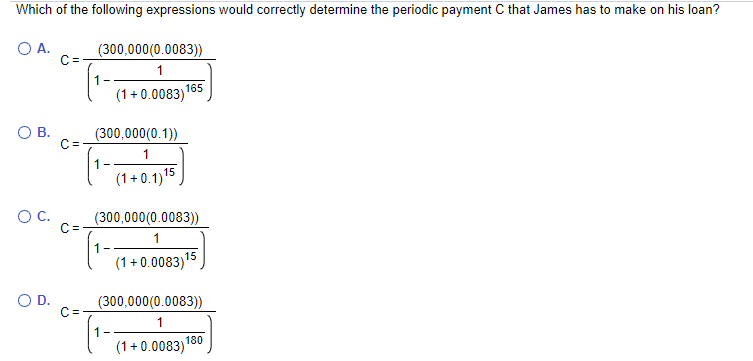Answered step by step
Verified Expert Solution
Question
1 Approved Answer
19) James wants to buy a house worth $300,000. To do so, he takes out a mortgage loan equal to the price of the house
19)
James wants to buy a house worth $300,000. To do so, he takes out a mortgage loan equal to the price of the house (no down payment). The mortgage has to be repaid after 15 years and make monthly payments with an APR of 10%. Given this information, answer the following
How many payments in total would James have to make on this loan?
A.
180
B.
15
C.
165


Step by Step Solution
There are 3 Steps involved in it
Step: 1

Get Instant Access to Expert-Tailored Solutions
See step-by-step solutions with expert insights and AI powered tools for academic success
Step: 2

Step: 3

Ace Your Homework with AI
Get the answers you need in no time with our AI-driven, step-by-step assistance
Get Started


